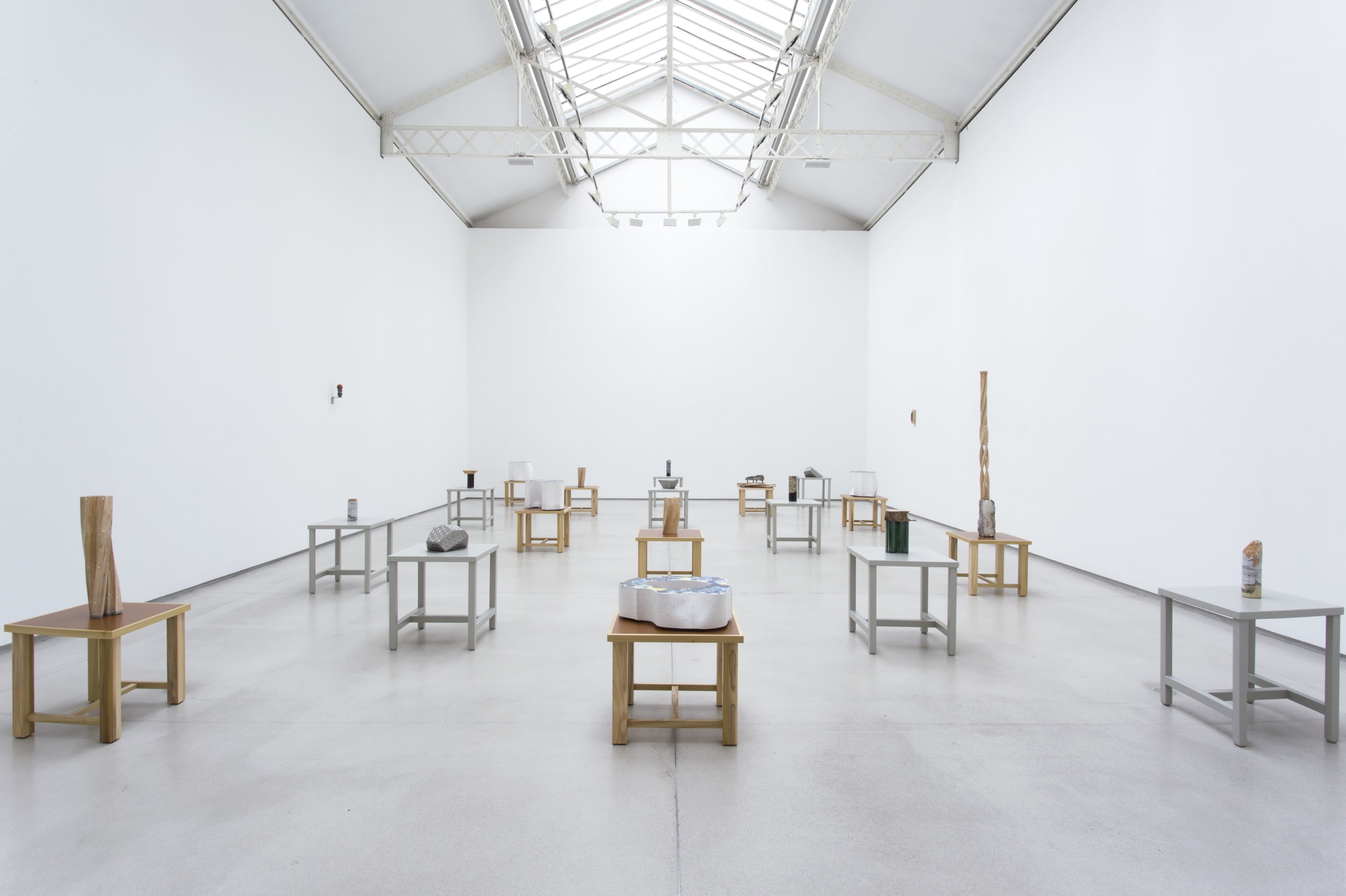

Overview
Deacon remains faithful to the principle of craftsmanship that has driven his practice since the beginning of his career.
Galerie Thaddaeus Ropac presents Thirty Pieces, a solo exhibition by British sculptor Richard Deacon.
As the title suggests, 30 works will be on display, 20 new sculptures in various materials and 10 works on paper. As the artist states: “This will be my fourth show in the space and I very deliberately did not want to have one or two dominant major pieces but to have an installation that you have to pick your way through and which has multiple voices.” Presented on tables of two different heights, the sculptures open up new directions in the artist’s work. In the past Deacon has always tended to use the floor as surface, the introduction of two surface heights initiates a sense of uncertainty.
In many respects, the installation reveals the porosity between the artist’s studio and the exhibition space. “I think showing what you do is implicit in the act of making art, and there are models for doing it. The exhibition is currently one of the strongest models around. For artists, to make an exhibition is to a greater or lesser extent a continuation of what happens in the studio.”[1]
Working on a domestic scale was also the occasion to further develop his virtuosity in sculpting wood, stone or stainless steel but also to experiment with new materials such as glazed refractory concrete. Deacon remains faithful to the principle of craftsmanship that has driven his practice since the beginning of his career. For instance, the stone works are all made from a cache of stone and concrete lumps that he extracts directly from a builder trash.
Scattered in sub-groups, the sculptures can be apprehended either autonomously or as a whole. Although there is no specific reason for the artist to decide to show thirty pieces, the title unfolds different associations. It follows a minimal gesture of self-referencing, while also carrying other connotations. It is notably evocative of the thirty pieces of silver Judas was given to betray Jesus, as reported in the Gospel of Matthew; an episode represented many times in religious paintings. Throughout his career Deacon has placed as much an emphasis on language as he has on materiality. This reflects a deep-rooted interest that stems from his reading of poetic, and philosophical texts amongst others.
Born in 1949 in Wales, Richard Deacon lives and works in London. He has occupied the foreground of British sculpture since the early 1980s. His works combine organic forms with elements of engineering. His early career was already marked by experiments with diverse materials and forms of artistic expression, which included performance, photography and drawing. Typical of his work is his keen interest in the specific consistency of the materials used, ranging from laminated wood to concrete, PVC, stainless steel and ceramics. Deacon's sculptures appear as complex lineaments, rhythmic intertextures or organic objects, impressive in their interpenetration of form, surface and space. Deacon describes himself as a ‘fabricator’, emphasizing the construction behind the finished object.
Recent solo exhibitions include Langen Foundation, Neuss, Germany (2016-17); Museum Folkwang, Essen, Germany (2016), Kunstmuseum Winterthur, Switzerland (2015); Tate Britain, London, UK (2014); Sprengel Museum, Hannover, Germany (2011); Musée de la Ville de Strasbourg, France (2010); Portland Art Museum, Oregon, USA (2008); PS1 Contemporary Art Center, New York, USA (2001). Richard Deacon was awarded the Turner Prize in 1987. He participated in documenta 9, Kassel, Germany in 1992 and represented Wales at the Venice Biennial, Italy in 2007.
Richard Deacon has just been awarded the Ernst Franz Vogelmann-Preis for Sculpture and will have a solo exhibition at Städtische Museen Heilbronn in Fall 2017. The San Diego Museum of Art in California organizes the first institutional retrospective of the artist in the United States from March to July 2017.

















































































































































































